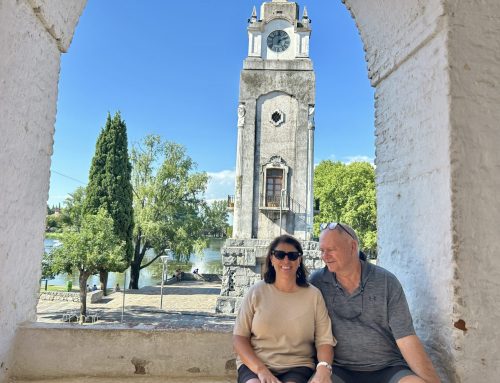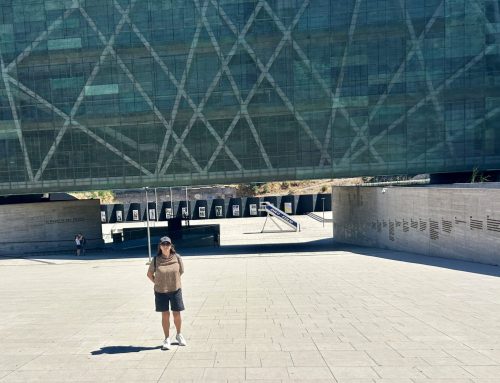Salta
We flew from Cordoba to Salta in Argentina, taking a little over a hour. The city of Salta is located in the Lerma Valley at the foothills of the Andes mountains in the northwest part of Argentina. Its population is about half a million people.
We stayed at a delightful property, The House of Jasmines, a Relais & Châteaux property owned by a French couple. Since buying the property from actor, Robert Duvall in 2007, they’ve made significant changes, increasing the size of dining area and also the accommodation. The food was excellent, the service was excellent, the extensive grounds and swimming pool were immaculate. All in all it was a 10/10 experience, so it’s not surprising it has been awarded the most romantic estancia in the world.

The House of Jasmines

The villas were dotted around the property.
Highlights from the city of Salta
The Plaza 9 de Julio, the central square in Salta was pleasant and safe, but had no wow factor. However, the neo-classical style Cathedral was definitely worth a visit, as was the San Francisco Church. After we had explored the square, our guide Juan, drove us to San Bernardo Hill where gondolas link the mountain tops. The views over the city were magnificent.

The Salta Cathedral
However, while these sites were good to visit, the pick of the bunch in Salta was the MAAM museum. The MAAM Museum tells the story about three children from Llullaillaco, who were offered to the gods. They were found mummified in 1999.
The three children, belonging to the Inca civilisation (over 500 years ago) were found on the summit of the Llullaillaco Volcano, at 6,700 m above sea level. They had been preserved because of the extreme cold, at high altitude. It was later discovered they were part of a ritual known as Capacocha, the most important ceremony of the Inca Empire.
On arrival to the volcano summit, the children were put in a pit. With the help of chicha (corn alcohol), they slept and their graves were closed. According to their beliefs, the children were reunited with ancestors to watch over the villages and provinces of the Inca Empire.
We saw the three preserved children, named by archaeologists as, La Niñá del Rayo, a 6 year old girl, El Niño, a 7 year old boy and La Doncella, a 15 year old girl. They were beautifully preserved and their clothes and headwear were all intact.
No photographs could be taken in the museum.
Cafayate
The following morning we set off through the Lerma Valley to Cafayate, a full days expedition covering approximately 400 kilometres. Passing several small villages and extensive fields of tobacco crops we continued into the Calchaquí Valley. Distinctive red mountains and natural rock formations including; The Amphitheatre, The Castle, The Titanic and many more, make this region worth visiting.

The Amphitheatre

This gentleman was playing music in The Amphitheatre, and the acoustics were amazing.

The Castle.

The Titanic.
On arrival in Cafayate, we had lunch and I experienced grilled goat for the first time – delicious.
Cafayate is also Argentina’s second largest centre for wine production. It’s famous for torrontes, a grape producing aromatic dry white wine, (the taste is a mix between Sauvignon Blanc and Chardonnay).
Purmamaca
The following day we had another full days excursion. The round trip, north into the Jujuy Province was about 500 kilometres. It’s no surprise the very colourful Humahuaca Gorge is a UNESCO World Heritage site.
After driving for a couple of hours we stopped at a road side restaurant. The restroom was full of people washing and cleaning their teeth. As it transpired a bus travelling from Buneso Aries to Boliva had made its first stop in many hours. There were also many trucks on the road, often with Paraguay number plates. Paraguay is land locked, so with no port they travel to use Chile’s free port. Their driving was often erratic, but the winding road ensured they travelled slowly.

Humahuaca Gorge
We stopped for lunch at the small village of Purmamarca, at the foot of the famous Hill of Seven Colours. There are literally seven different coloured rocks making up the landscape. The hill is believed to hold Godlike powers in tribal times. The town was colourful with typical adobe houses and many artisan crafts for sale.

The small village of Purmamarca was very colourful with many artisan products for sale.
Back on the road, we eventually reached the summit of Jujuy Altura at 4,170 metres above sea level. The terrain was so stark, even the cactus had stopped growing at 3,500 metres. This is higher than New Zealand’s tallest mountain, Mount Cook. It was very dry with a rainfall of only 100 millimetres annually. The air was so thin, Tim felt very woozy.

The summit at 4,170 metres.
Salinas Grandes
We then continued onto Salinas Grandes, salt flats created by volcanic action about 10 million years ago. Since then, endless cycles of rain and evaporation have left a layer of salt about 40 centimetres deep, over 13,000 hectares. It’s the third largest salt flat in the world. It’s a stunning sight.

The salt flats at Salinas Grande are the 3rd largest in the world.

Locals making a tourist dollar!



Leave A Comment